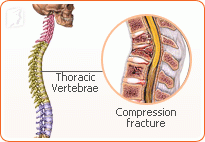While lifestyle changes, alternative medicine, and hormone replacement therapy (HRT) are recommended to treat osteoporosis and many menopause symptoms, some women will need stronger treatments for their osteoporosis. Medications and surgeries are some of the best ways to treat the degenerative bone disease that is most often due to hormonal imbalance during menopause. These treatments are generally considered as a last resort due to their invasive, high-risk nature.
Prescription medications and surgery should only be considered when all other options are ineffective.
Prescription Medication and Surgeries for Osteoporosis

Always consult your doctor before turning to medications. Some can produce harmful side effects and may have adverse effects in your body when mixed with other medications. Some of the most effective medicines for treating osteoporosis include:
Bisphosphonates
Similarly to estrogen, this group of medications preserves bone mass and reduces the risk of fractures. Alendronate (Fosamax), Ibandronate (Boniva), Risedronate (Actonel) and Zoledronic acid (Reclast) are all bisphosphonates, and bisphosphonates side effects can include nausea, abdominal pain, an inflamed esophagus, and ulcers.
Raloxifene
Often known as Evista, it has beneficial effects on bone density in postmenopausal women and comes without some of the risks of estrogen replacement therapy produce, such as uterine and breast cancer. However, hot flashes are a common symptom of this medication, and raloxifene can increase the risk of blood clots.
In addition, women have calcitonin, a hormone produced by the thyroid that reduces bone resorption and slow bone loss. Teriparatide (Forteo), which is a powerful medication, is used to stimulate calcitonin. However, long-term effects of this medication are unknown.
Another alternative treatment for osteoporosis is surgery. Some procedures can provide immediate relief from pain. While they are effective, they can cause serious side effects, including paralysis.
Vertebroplasty and kyphoplasty

These procedures relieve the pain from spinal compression fractures by injecting bone cement through a needle into the crush spinal bones.
Hemiarthroplasty
Also known as hip replacement surgery, this surgery may remove the femoral head and neck and replace them with metal instrumentation.
Recommendation
Although there are aggressive and intrusive treatments to deal with osteoporosis, there are also less intrusive, but effective alternatives treatments such lifestyle changes, alternative medicine, and HRT - popular treatments used to treat hormonal imbalance. Click on the link below to read more about alternative treatments for osteoporosis.
Sources
- New York State Department of Health.(n.d)."Calcium and Healthy Bones.".Retrieved from www.health.state.ny.us.
- Cleveland Clinic.(n.d)."Menopause and Osteoporosis.".Retrieved from http://my.clevelandclinic.org.
- National Osteoporosis Foundation.(n.d)."Prevention: Who's at Risk.".Retrieved from www.nof.org.
- American Physical Therapy Association.(n.d)."What You Need to Know about Osteoporosis.".Retrieved from www.apta.org.


